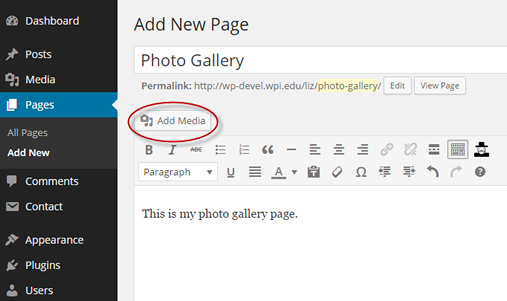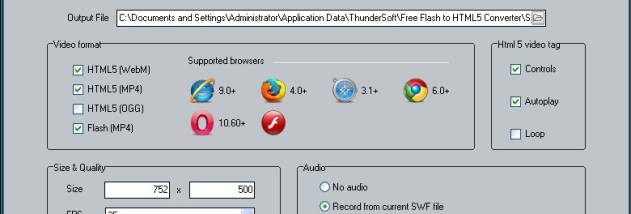
I expected (incorrectly, in this case) that if I only produced one source element (an MP4), Firefox would drop down to use the fallback content, as it does if I include an object element for a format not supported (for example, if I include a QuickTime object and QT is not installed, the user sees fallback content). From Oct 2009, more people saying that it's not intuitive to fall back in this way: I talked to Chris Double via Christian Heilmann at Mozilla and he said "You'd need to raise the issue with WHATWG/W3C. What I want is "Can you support any of these audio sources? No? Fallback." This seems intuitive to me. It doesn't do what I would expect at all. That's because fallback elements are only used if your browser doesn't support the audio tag at all. Notice that while I have fallback text present, I don't see it in Firefox. The part I was disappointed in was more of an HTML5 specification issue.
#Html5 audio file browser compatibility windows 7
In Firefox 20 (the beta channel) on Windows 7 and above, you can test MP3 Audio support by turning on the preference in about:config. Firefox will support MP3s in audio soon though by using the underlying operating system to play the stream rather than its own embedded code. Ya, Firefox currently doesn't support MP3 audio so it just flashes once then disappears. Your browser doesn't support the HTML audio tag. The HTML5 Audio tag is wonderful, right? Just works. I also wanted a nicer in-browser audio experience so I assumed I'd just drop in the audio tag and be done, right? I am in the process of adding faces for ALL 360+ shows going back 6 years.Ī big thanks to Lynsey Smith from Portland Girl Geek Dinners, by the way, for her hard work in finding pics for me!

I'd like to get the show expanded to a wider audience as I feel that listenership has kind of flattened lately. I hadn't realized how cheesy looking the podcast site was all these years.

For example, the Fast Forward, Rewind, and Restart functions throw “InvalidStateError” DOMExceptions if there is no audio file playing or loaded.I've been spending the evenings and weekends lately redesigning the blog and the Hanselminutes podcast site. With the try/catch statements, these conditions fail silently, but you can see the errors if you open either the Console or Script tab in Internet Explorer 9 F12 tools. One cause of exceptions is if the user tries to play a file that does not exist, rewind when no file is loaded, or a connection to a file cannot be made. Try/catch statements are used in conjunction with methods that can throw exceptions. If HTML5 audio is supported, there are other errors that might happen.
#Html5 audio file browser compatibility code
If the audio element does not exist no code is executed. Each function tests by using if (window.HTMLAudioElement) to see if the audio element exists. The first is when you check for HTML5 audio support. In the JavaScript section of the code, there are areas where errors are likely. Fail silently but show in F12 developer tools console }// Tests the paused attribute and set state. Var audioURL = document.getElementById(‘mylist’) //Skip loading if current file hasn’t changed. Var btn = document.getElementById(‘play’) Var oAudio = document.getElementById(‘myaudio’)

Var currentFile = “” //Global variable to track current file If these values are different, the src property is set to the new file URL, the “currentFile” variable is updated, and the load method is called. When the user clicks the Play button, the “currentFile” variable is compared to the value in the text field that is specified by “audioURL.value”. The global variable “currentFile” is defined so that it keeps track of the URL for the file that is currently playing. To play more than one file, you can set the audio object’s src property to a URL of an audio file from within JavaScript. In the JavaScript portion, using document.getElementById, the audio object is returned in oAudio, the button object is returned in btn and list object is returned in audioURL. When a file is first loaded, the paused property returns true (playback is paused) even though the pause method has not explicitly been called. If the file is paused, the paused property returns true, and the play method is called, the button label is updated to Pause. If the audio file is playing, the paused property returns false, and the pause method is called to pause the playback. The state is checked every time the “playAudio” function is called. The button object is retrieved so that the button label can be toggled between Play and Pause, depending on the state of the audio object’s paused property. The play and pause methods are used to provide playback control.


 0 kommentar(er)
0 kommentar(er)
